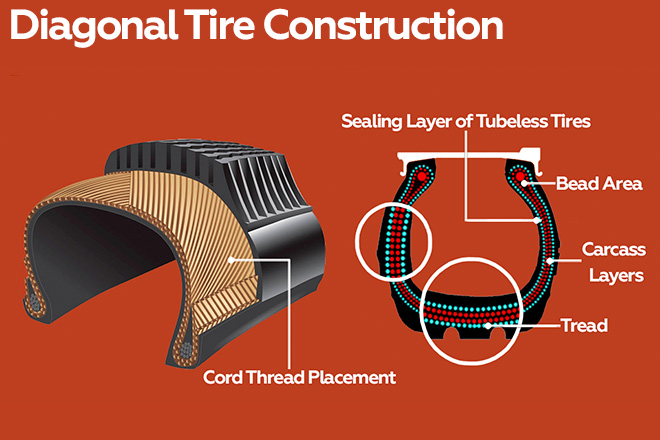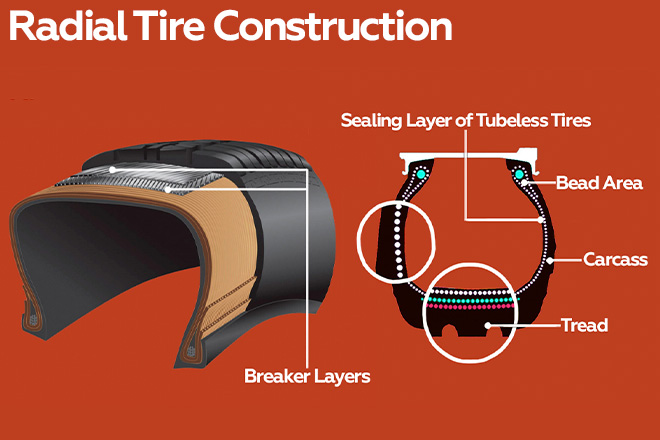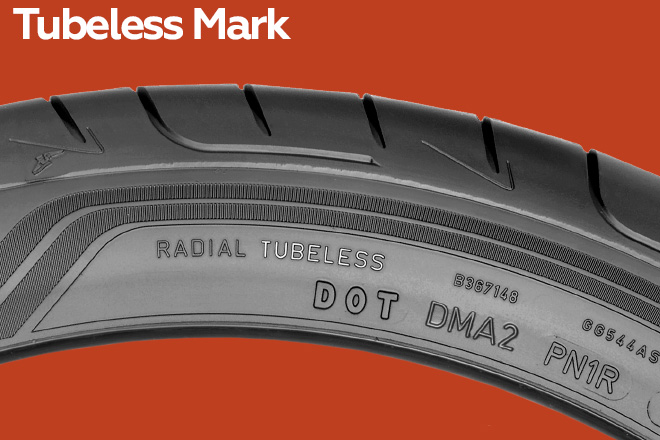Modern Tire Structure: A Detailed Overview

Introduction
In a world where mobility is paramount, the humble tire serves as a silent yet indispensable ally in our daily travels. From navigating bustling city streets to traversing rugged terrains, the tire's unassuming presence belies its complex and critical role in automotive engineering. In this article, we embark on a comprehensive journey into the world of tires, exploring the nuanced intricacies of their design, construction, and technological advancements. By unraveling the layers of this vital component, we aim to shed light on its significant contribution to vehicle performance, safety, and the broader spectrum of automotive technology. In the upcoming sections, we will delve into the various aspects of tire technology, ranging from basic construction principles to the latest innovations shaping the future of tire design, ensuring an enlightening exploration for automotive enthusiasts and casual readers alike.
Decoding the Complex Structure of Tires
The tire is a marvel of design and function, often overlooked in its complexity and ingenuity. Here, we delve into the intricate structure of a tire, dissecting each component to unveil the sophisticated craftsmanship that lies within these circular foundations of the automotive world.

Nylon Overlays
Nylon overlays, integral to the tire's architecture, play a pivotal role in maintaining the tire's shape and integrity. These overlays, made from woven nylon fabric, are strategically placed to reinforce the tire's structure, providing resistance against high-speed stress and enhancing durability.
Halobutyl Liner
At the tire's core lies the halobutyl liner. This innermost layer, a blend of butyl rubber and halogenated compounds, is critical for air retention. Its impermeability to air is paramount in maintaining tire pressure, a vital aspect of vehicle performance and fuel efficiency.
Tread
The tread is the tire's frontline soldier in the battle against the road. It's the part of the tire that makes direct contact with the road surface, crafted from a composite of rubber compounds. The tread pattern is meticulously designed for optimal grip, water evacuation, and wear characteristics, defining the tire's personality in different driving conditions.
Steel Belts
Beneath the tread lie the steel belts, a duo of steel layers that provide strength and stability. These belts are essential in distributing forces evenly across the tire, aiding in handling, durability, and puncture resistance.
Ply Turn Up
The ply turn-up is a reinforcement that extends from the tire's body plies around the bead. It adds an extra layer of strength and helps anchor the tire onto the wheel, ensuring a secure fit and effective transfer of the vehicle's load onto the tire.
Chafer
The chafer protects the tire's rim area and prevents rim slip. This component, made from abrasion-resistant rubber, is crucial in preserving the integrity of the bead area, especially under the high stress of cornering.
Beads
The beads are the tire's backbone, consisting of high-strength steel cables encased in rubber. They ensure the tire remains fixed to the wheel, providing a crucial seal and maintaining the tire's structural integrity under varying pressures.
Toe Guard
A toe guard adds an extra layer of protection at the tire's bead area. It acts as a buffer between the tire and wheel, reducing wear and tear on the bead, and safeguarding against external elements that could compromise the tire's fit on the rim.
Apex
The apex is a rubber compound placed above the bead. It contributes to the tire's handling characteristics by influencing sidewall stiffness. A well-designed apex can significantly enhance steering response and cornering stability.
Body Plies
Body plies are the tire's skeleton. Made from fabric cords embedded in rubber, these plies determine the tire's strength and flexibility. They are engineered to withstand internal pressures and external forces, playing a critical role in the tire's load-bearing capacity.
Undertread
The undertread lies between the steel belts and the tread. This layer is crucial in binding the tread to the belts and plays a role in heat dissipation, a key factor in tire longevity and performance.
Sidewall
The sidewall protects the side of the tire from impacts and abrasions. Constructed from flexible rubber, it absorbs shocks from road irregularities, contributing to ride comfort. The sidewall also contains crucial information about the tire, including size and load ratings.
Navigating Tire Construction: Radial and Diagonal Designs
In the world of automotive engineering, the construction of car tires plays a pivotal role in defining vehicle performance. Tires, often perceived as simple components, are in reality products of complex engineering, specifically in their construction—be it radial or diagonal.
Diagonal Tire (Bias) Construction

Diagonal tires, traditionally known for their robust design, feature cord filaments made from polymeric materials. These cords are arranged diagonally across the tire, typically at angles between 35-40 degrees. This specific arrangement, often in multiple even layers (2, 4, 6, 8, etc.), optimizes load distribution, significantly aiding in impact absorption. This design is instrumental when the tire encounters irregularities like potholes, providing a cushioning effect.
| Features | Advantages and Structural Components of Diagonal (Bias) Tires |
|---|---|
| Design and Cost | Cost-effectiveness due to simpler design; includes a sealing layer in tubeless tires. |
| Durability | Enhanced durability of the sidewall, part of the tire's structure. |
| Load Absorption | Superior load absorption capabilities, aided by the design of the carcass layers. |
| Repairability | Improved repairability, with a focus on the tread and overall tire structure. |
| Cord Arrangement | Sturdy and resilient under side impacts, thanks to the specific cord filament arrangement. |
| Adaptability to Rough Terrains | Better performance on uneven and rough surfaces, suitable for various terrains. |
| Resistance to Side Impacts | Higher resistance to damage from side impacts, enhancing overall durability. |
| Suitability for Lower Speed Applications | Ideal for vehicles in industrial and agricultural settings, where speed is less of a factor. |
Radial Tire Construction

Radial tires, on the other hand, represent a more modern approach. The cord filaments in these tires can be a mix of polymeric materials and steel, particularly in areas in contact with the road surface, or entirely metal-based. The cords are arranged at a 90-degree angle to the direction of travel. The breaker, a crucial component, typically consists of thin steel cables coated with brass (0.15 - 0.25 mm in diameter), offering enhanced heat conductivity and resistance to thermal aging. Radial tires have a single-ply carcass, allowing the tread and sidewall to function independently. This independence means that sidewall deflections do not affect the tread, enhancing overall tire performance.
| Features | Advantages and Structural Components of Radial Tires |
|---|---|
| Design and Efficiency | Lower rolling resistance contributing to better fuel economy. |
| Durability and Lifespan | Increased lifespan due to durable construction, including a robust carcass. |
| Heat Management | Fewer breaker layers leading to effective heat dissipation and reduced overheating. |
| Performance in Various Conditions | Improved handling in different weather conditions, supported by advanced tread design. |
| Weight Reduction and Fuel Consumption | Reduced weight aids in lowering fuel consumption and vehicle load stress. |
| Structural Integrity | Sealing layer in tubeless tires enhances durability and air retention. |
| Sidewall Construction | Sidewall designed for an optimal balance of flexibility and strength, influencing ride quality. |
| Breaker Layer Technology | Innovative breaker layers designed for resilience and efficient impact absorption. |
Tire Design Innovations: Tube vs. Tubeless
The evolution of tire technology marks a significant chapter in the history of automotive advancements. Understanding the intricate design differences between tube type (TT) and tubeless (TL) tires reveals much about their respective functionalities and applications.
Invented by the Michelin brothers in 1895, tube tires (TT), or tubular type tires, have a rich history. Originally patented by Robert William Thomson in 1846, these tires feature a separate tube inside, acting as the sealing layer. The design, relatively unchanged since its inception, involves the tube being inserted into the tire, which then mounts onto the wheel. This traditional design, while soon to be outclassed by modern advancements, still holds a place in certain cases.

Benefits and Disadvantages of Tube Type Tires
Tube tires are noted for their affordability compared to tubeless options. In case of damage, only the tube needs replacement, not the entire tire. They are also versatile, fitting any rim without requiring special modifications. However, their weight is a drawback, being heavier than tubeless tires. They are prone to instant deflation upon puncture, necessitating immediate replacement. Additionally, the risk of the inner tube being punctured by debris or worn cord threads is high, and repairing even minor punctures can be a cumbersome process.
| Features | Tube Type Tires |
|---|---|
| Affordability | More affordable compared to tubeless options. |
| Damage Response | Only the tube needs replacement in case of damage, not the entire tire. |
| Versatility | Fits any rim without special modifications. |
| Weight | Heavier than tubeless tires, impacting handling and efficiency. |
| Puncture Response | Prone to instant deflation upon puncture, requiring immediate replacement. |
| Puncture Risk | High risk of inner tube being punctured by debris or worn cord threads. |
| Repair Process | Repairing punctures can be cumbersome and time-consuming. |
Tubeless Tires: The Modern Standard
Tubeless tires (TL), a concept developed and patented by Paul Litchfield of Goodyear in 1903, didn't gain reliability until much later. By 1954, Packard cars were the first to be fitted with these tires off the assembly line. The tubeless tire's design eliminates the need for a separate tube. Instead, an inner sealing layer, typically a few millimeters thick and made of a synthetic and natural rubber mix, is vulcanized to the tire. This layer effectively holds the compressed air, fitting snugly against the tire.
Advantages and Challenges of Tubeless Tires
The key benefits of tubeless tires include their ability to slowly depressurize, allowing for continued driving to a repair point post-puncture. They are lighter, reducing the load on the vehicle's suspension, and more durable due to less susceptibility to overheating and internal pressure stability. The design also offers improved driving comfort due to softer sidewalls and contributes to fuel economy. However, installation and repair of tubeless tires require specialized equipment and skills, and damage to the wheel rim can lead to tire failure. Additionally, driving on a flat tubeless tire can irreparably damage the tire.
| Features | Tubeless Tires |
|---|---|
| Depressurization | Slow depressurization allows driving to repair point post-puncture. |
| Weight Impact | Lighter, reducing load on vehicle's suspension, enhancing handling. |
| Durability | Less prone to overheating, more stable internal pressure. |
| Driving Comfort | Improved comfort due to softer sidewalls. |
| Fuel Economy | Enhanced fuel economy due to reduced weight and rolling resistance. |
| Installation | Requires specialized equipment and skills for installation and repair. |
| Rim Damage Risk | Vulnerable to failure if wheel rim is damaged or deformed. |
| Flat Tire Risks | Driving on a flat tire can cause irreparable damage. |
Today, tubeless tires dominate the passenger car market and are making significant inroads into the light truck and cargo segments. Conversely, tube tires are still preferred in certain sectors, like bicycles and motorcycles with spoked wheels, which generally don't suit tubeless tires well. For enthusiasts and certain "old-timers," the ability to replace just the tube and perform easy repairs is a significant advantage.
Identifying Tube vs. Tubeless Tires

The differentiation between these tire types is marked by specific labels: TT for tube and TL or T for tubeless. Additionally, the nipple design varies between the two, with tube tires featuring a long, smooth nipple that can fall inside the tire when flat, whereas tubeless tires have a short, beaded nipple firmly attached to the rim.
Embracing the Future: Run Flat Tires and Beyond
The automotive industry is constantly evolving, and one of its most significant advancements in recent years is the development of Run Flat tire technology. This innovative feature represents a leap forward in driving safety and convenience, revolutionizing how we deal with one of the most common issues on the road: flat tires.

Run Flat tires are designed to keep a vehicle moving safely even after a puncture or cut. Traditional tires, when punctured, lose pressure rapidly. The weight of the car causes the tire to detach from the rim, and the sidewalls compress, leading to total tire destruction. Run Flat tires, however, are engineered with reinforced components, particularly the sidewalls. This reinforcement allows the tire to maintain its shape and functionality, albeit at a reduced capacity, for a limited distance after being punctured.
Evolution of Run Flat Technology
Historically, the support ring technology was a precursor to modern Run Flat systems. This involved an internal support ring around the rim's circumference, enabling the car to rest on this ring when the tire lost pressure. Michelin, a leader in tire innovation, developed the PAX System, an advanced iteration of this concept.
However, these tires, characterized by their complex mounting and dismounting procedures, required special equipment and alloy wheels. Due to low consumer demand, production for general use ceased in 2007. Yet, they remain in use in certain armored vehicles for their durability and high level of protection against external damage.
The Self-Healing Tire: A Separate Innovation

An interesting offshoot of Run Flat technology is the "self-healing" tire. These tires have a layer inside that seals punctures when the object causing the puncture is removed. This technology, though related, is distinct from the conventional Run Flat system and merits its own discussion.
Understanding the Limitations
Having Run Flat technology doesn't mean a tire is invincible post-puncture. There are limitations to consider. After a puncture, a Run Flat tire can typically cover a distance of 50 to 150 kilometers (31 to 93 miles) at a maximum speed of 80 km/h (50 mph), depending on the vehicle's load. Cars equipped with these tires must also have a tire pressure monitoring system (TPMS, RDC, RPA) and a stability control system (ESP).
| Advantages of Run Flat Tires | - Spare Tire Elimination: Removes the necessity of carrying a spare tire, allowing continued driving after a puncture. - Repairability: Small punctures can be repaired in a manner similar to conventional tires. |
| Distinguishing Features | - Reinforced Carcass: The sidewalls are notably thicker, providing increased durability. - Rigid Sidewall Ring: Ensures the tire remains on the rim even after a puncture, preventing detachment. - Heat-resistant Rubber Compound: Enhances the tire's durability and performance under high temperature conditions. |
| Challenges | - Reduced Comfort and Dynamics: Due to their stiffness and weight, they may affect the vehicle's ride quality. - Higher Cost: Typically 10-30% more expensive than conventional tires. - Usage Limitations: Must be specified by the vehicle manufacturer and require appropriate tire pressure monitoring systems. |
| Additional Considerations | - Safety: Offers increased safety by allowing drivers to maintain control and continue driving after a puncture. - Convenience: Particularly beneficial for punctures occurring in remote or unsafe areas. - Installation Requirements: Specialized installation process, requiring knowledgeable technicians and equipment. - Environmental Impact: Potential for reduced environmental footprint by eliminating the need for a spare tire. |
Materials of Construction in Tires: Composition and Functionality
Automotive tires are complex products composed of various materials, each contributing uniquely to the tire's performance and durability. Key components include:
- Natural and Synthetic Rubber: Offering weather resistance, grip, and durability.
- Fillers (Carbon Black & Silica): Reinforce the rubber, enhancing strength and rolling resistance.
- Steel: Constitutes 10-20% of a tire's weight, enhancing puncture control and stability.
- Textile: Fabric cords provide support and stability under various conditions.
- Antioxidants and Antiozonants: Protect the rubber from environmental degradation.
- Curing Systems: Chemicals like sulfur and zinc oxide solidify the rubber into its final shape.
The blend of natural and synthetic rubber strikes a balance between elasticity and resilience, essential for tire longevity. Advanced fillers like carbon black and silica not only improve the tire's physical properties but also contribute to safety and fuel efficiency, while the incorporation of steel and textiles enhances the tire's structural integrity, ensuring stability and reliability under daily use.
FAQs
Most frequently asked questions about tires and their construction:
- Q: How Do Manufacturers Ensure Uniform Tire Quality During Mass Production?
A: Tire manufacturers employ rigorous quality control processes, including automated inspections and testing at various production stages. Advanced manufacturing technologies ensure consistency in tire construction, from the rubber compound to the final tread pattern. - Q: How Do the Layers in a Tire Contribute to Its Overall Performance?
A: Each layer in a tire, from the inner liner to the outer tread, plays a distinct role. The inner liner is airtight, maintaining pressure, while the body ply provides strength. The belts under the tread influence handling, and the tread itself offers traction. - Q: Why Are Different Rubber Compounds Used in Tire Manufacturing?
A: Rubber compounds are varied to suit different performance requirements. Softer compounds offer better grip but wear out quickly, ideal for high-performance tires. Harder compounds last longer, suitable for everyday use. - Q: How Are Tire Sidewalls Reinforced to Handle Increased Loads and Stresses?
A: Reinforced sidewalls are typically achieved using stronger materials or additional layers of rubber and fabric. These enhancements support greater load capacities and resist sidewall flexing, critical for heavy-duty and high-performance applications. - Q: What Is the Role of Nanotechnology in Tire Construction?
A: Nanotechnology in tire construction involves incorporating nano-scale materials to improve properties like traction, fuel efficiency, and wear resistance. Nanomaterials can enhance rubber compounds at a molecular level, leading to significant performance improvements. - Q: How Is Airless Tire Technology Being Refined for Wider Adoption in Passenger Vehicles?
A: Refinements in airless tire technology for passenger vehicles focus on reducing weight, improving ride comfort, and ensuring durability comparable to traditional pneumatic tires. - Q: How Has 3D Printing Technology Influenced Tire Prototyping and Design?
A: 3D printing allows for rapid prototyping of complex tread patterns and structures, speeding up the development process and enabling more intricate design testing. - Q: How is Tire Construction Adapting to the Demands of Electric Vehicles?
A: Tire construction for electric vehicles is adapting to handle increased torque and weight, focusing on low rolling resistance to maximize battery range and noise reduction for a quieter ride.
Driving Forward: Concluding Thoughts on Tire Technology
In summary, the intricate world of automotive tires combines advanced engineering with safety and sustainability. The transition from traditional tube tires to innovative tubeless and Run Flat technologies highlights significant strides in driving safety and convenience. These developments underscore the tire industry's commitment to enhancing vehicle performance, ensuring safety, and reducing environmental impact. As tire technology evolves, it remains a crucial aspect of automotive innovation, contributing significantly to the overall driving experience and vehicle efficiency.
The topic addressed in this article is a key element of overall car safety. We invite you to extend your knowledge by accessing a range of expertly crafted articles on our website, focusing on various aspects of automotive care.

Steel, Alloy, Forged, and More: Navigating Through Wheel Types
Uncover the intricacies of automotive wheels with our comprehensive guide. Explore the differences between steel, alloy, forged, and modular wheels. Understand the nuances of rims versus wheels, and delve into the design, manufacturing, and benefits of each type. Learn about the impact of wheel selection on vehicle performance, safety, and style. This article is a must-read for both new enthusiasts and seasoned car lovers, offering valuable insights into the world of automotive wheels. Enhance your vehicle knowledge and make informed choices with our expertly crafted content.

Decoding Tire Tread Types: Enhancing Performance and Safety
Introduction Selecting the right tires involves more than just choosing a brand or finding the right fit; the tread pattern is a crucial consideration. This article will guide you through the varied landscape of tire treads—symmetrical, asymmetrical, directional and specific advantages for different driving surfaces such as highways, off-road trails,…

Winter Tire Guide: Maximize Safety and Performance
Introduction Tires, as the sole point of contact between the vehicle and the road, significantly influence driving safety and comfort. Selecting the appropriate tires involves assessing multiple factors, such as driving habits, the type of vehicle, and the specific weather and road conditions of the area. This choice is key…

Read Your Tires Like a Pro: A Guide to Tire Markings
The sidewall of your tires is filled with important information that tells you everything you need to know about your tire. From sizing and type to performance indicators, each element plays a crucial role in matching tires to your driving needs. As we explore the intricacies of tire designations, you'll gain the knowledge to make informed choices, ensuring your tires are not just a perfect fit for your vehicle but also allies in your journey, guaranteeing safety and efficiency on every road you travel.
